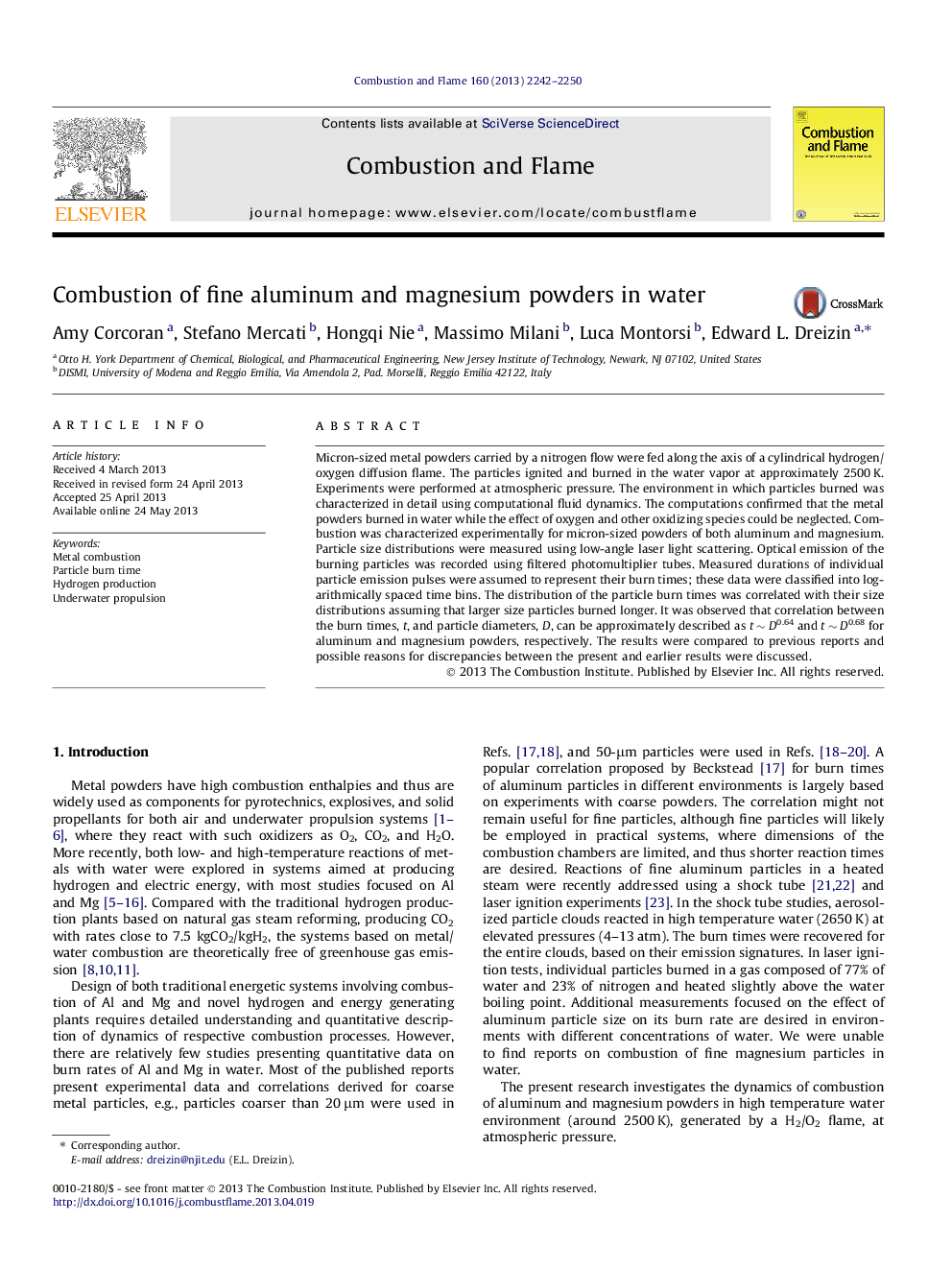| Article ID | Journal | Published Year | Pages | File Type |
|---|---|---|---|---|
| 10264823 | Combustion and Flame | 2013 | 9 Pages |
Abstract
Micron-sized metal powders carried by a nitrogen flow were fed along the axis of a cylindrical hydrogen/oxygen diffusion flame. The particles ignited and burned in the water vapor at approximately 2500 K. Experiments were performed at atmospheric pressure. The environment in which particles burned was characterized in detail using computational fluid dynamics. The computations confirmed that the metal powders burned in water while the effect of oxygen and other oxidizing species could be neglected. Combustion was characterized experimentally for micron-sized powders of both aluminum and magnesium. Particle size distributions were measured using low-angle laser light scattering. Optical emission of the burning particles was recorded using filtered photomultiplier tubes. Measured durations of individual particle emission pulses were assumed to represent their burn times; these data were classified into logarithmically spaced time bins. The distribution of the particle burn times was correlated with their size distributions assuming that larger size particles burned longer. It was observed that correlation between the burn times, t, and particle diameters, D, can be approximately described as t â¼Â D0.64 and t â¼Â D0.68 for aluminum and magnesium powders, respectively. The results were compared to previous reports and possible reasons for discrepancies between the present and earlier results were discussed.
Keywords
Related Topics
Physical Sciences and Engineering
Chemical Engineering
Chemical Engineering (General)
Authors
Amy Corcoran, Stefano Mercati, Hongqi Nie, Massimo Milani, Luca Montorsi, Edward L. Dreizin,
